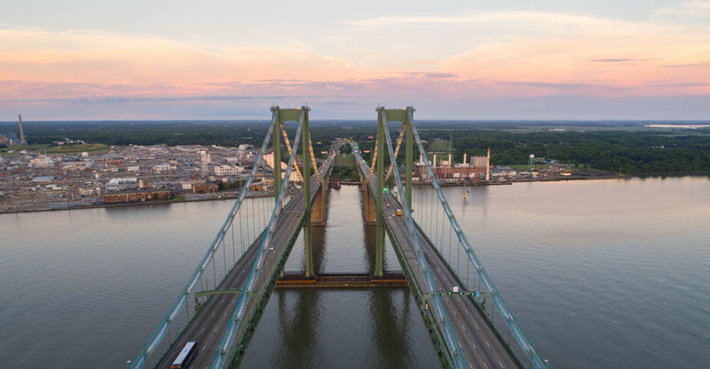Delaware Drug Abuse Treatment

Many urban areas have “bedroom communities.” What that means is that there are smaller cities around the urban center that serve as homes for those who work in the urban area, without their having any other real reason for existence. In the case of Delaware, a similar situation exists but it’s related to drug trafficking. Many drug traffickers in New York, New Jersey, and particularly the Philadelphia area, have moved into Delaware to escape heightened law enforcement and drug interdiction activity.
The phenomenon then occurs in Delaware that drug dealers wanted for crimes in New Jersey or Maryland may often be found in Delaware. One dealer gave a woman in Ocean City, Maryland enough OxyContin to overdose and die. He was living in and arrested in Newark, Delaware.
Ties to Philadelphia and New York City Keep Delaware Addicts Supplied
New York City is one of the main drug distribution points in the United States. A long list of ethnic groups are involved in bringing in drugs from the Caribbean, up from Mexico by way of the Southwestern U.S., or from Europe or Canada. It’s just a short ride down I-95, a major drug transit channel in the eastern U.S., to supply the needs of Delaware.
Other enterprising traffickers bring potent Canadian hydroponic marijuana across the border in the U.S and use the Northeast as a distribution center for other parts of the country, reversing the usual flow of drugs. In April 2009, a multi-million dollar trafficker was arrested in Newark, Delaware, who had stash houses in Glasgow, Wilmington and in Newark near the University of Delaware campus. He had been smuggling in Canadian marijuana and distributing it throughout Delaware, Maryland, Pennsylvania and as away as far as Florida.
Delaware is flanked by three of the East Coast’s High-Intensity Drug Trafficking Areas, so designated by the Office of National Drug Control Policy. In the south lies the Washington D.C./Baltimore HIDTA and in the north is the New York-New Jersey HIDTA and the Philadelphia-Camden, New Jersey HIDTA. Caught right in the middle, Delaware will never be short of supplies of addictive substances until drug trafficking to these major metropolitan areas is brought under control.
Club Drugs and Synthetics Found at Rehoboth Beach
Summers in Rehoboth Beach find high levels of club drugs such as LSD, ketamine, Ecstasy, and GHB in use. And while methamphetamine is not a prevalent problem across Delaware, it can be found in greater quantities at the beach. All-night raves in the summertime are a prime market for such drugs. In fact, one promoter whose job was setting up and running raves stated that his only reason for doing so was for the profits he could make from selling drugs, particularly Ecstasy.
Alcohol and Drug Dependence Figures Are High Among Young Adults

Perhaps due in part to a party atmosphere along the beach areas and in the colleges and universities in this small state, alcohol use statistics and drug dependence figures are high for those aged 18 to 25. According to a 2007 federal survey, nearly a quarter of these young people were current marijuana users. Fifteen percent of these young people admit to alcohol dependence or abuse, and one in five are dependent on or abusing drugs or alcohol.
Additionally, three out of ten under-aged citizens consumed alcohol with two-thirds of them binge drinking (having five or more drinks in one sitting) at least once a month.
As a result, tens of thousands of Delaware residents need access to treatment for alcohol addiction or drug abuse, either of illicit drugs or abused prescription drugs.
Can Addiction be Solved?
In 2008, nearly 8,000 Delaware citizens were admitted to publicly-funded drug addiction treatment facilities. The largest group needing rehab were those addicted to opiates: nearly 2,000 for heroin addiction and another thousand who were addicted to opiates or opioids like methadone, Percocet, OxyContin, Vicodin, Lortab, and morphine. Even the recently-developed Suboxone used in treatment centers has become a drug of abuse.
Nearly 1,600 people needed to be treated for addiction to marijuana, a drug so many people try to argue is harmless. About a third of these were under 20 years old and another third were between 21 and 25.
Addiction is solved when a person no longer suffers from cravings that may, one difficult day, drive them over the edge and back to alcohol, cocaine, marijuana or narcotics. Most drug recovery programs do not effectively address the cravings, leaving the recovering addict at risk. The Narconon program has a thorough detoxification phase that cleanses the body of all the residual drugs, remnants of the street drugs, prescription drugs or alcohol that were consumed. When these are thoroughly washed away with a combination of nutritional supplements, exercise and dry-heat sauna, the result for many people is greatly reduced or even eliminated cravings.
And with cravings behind them, the former addict is truly free to concentrate on repairing the life that was destroyed by drug use and addiction. This is the road to a drug-free future.
 ®
®